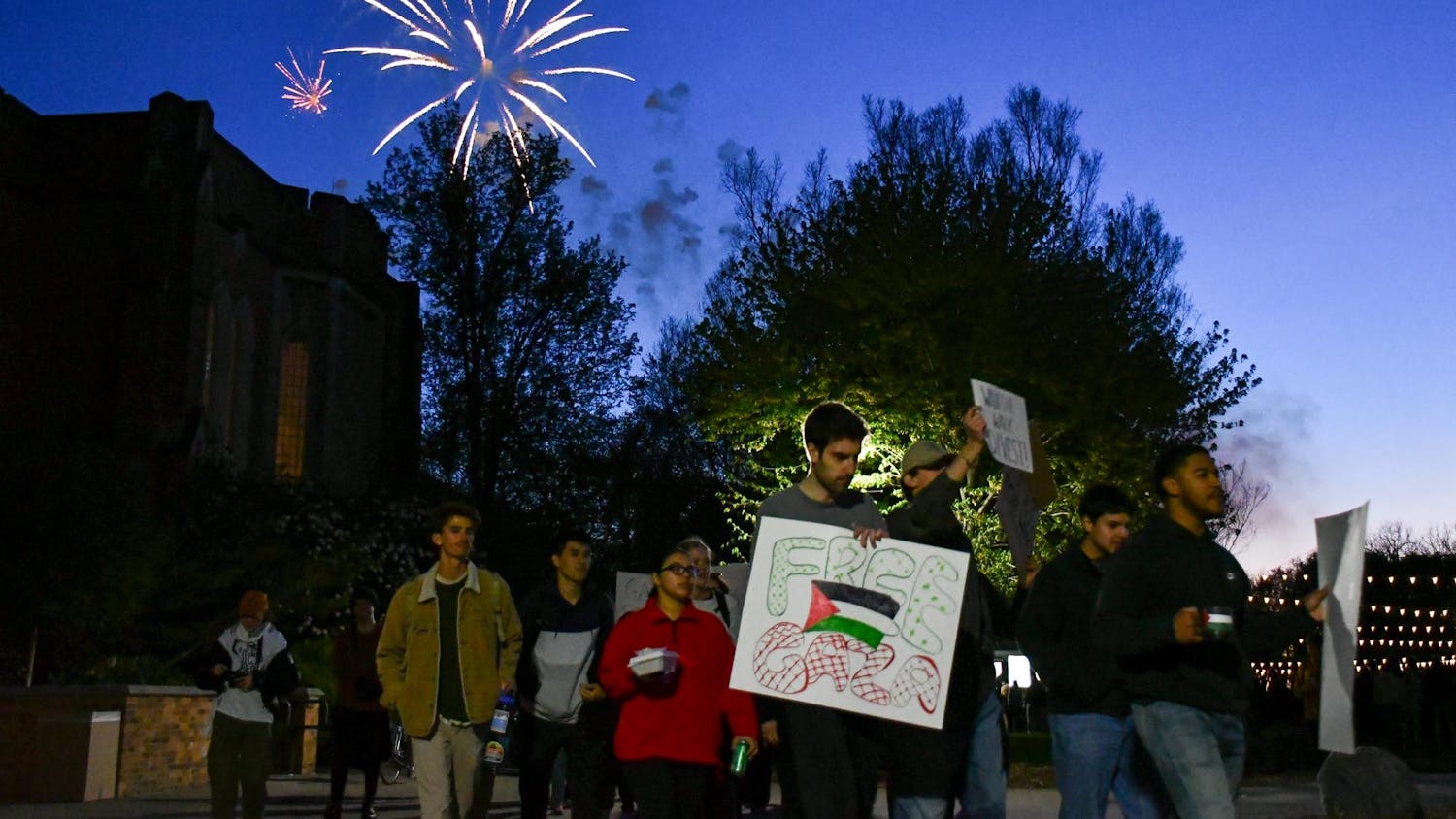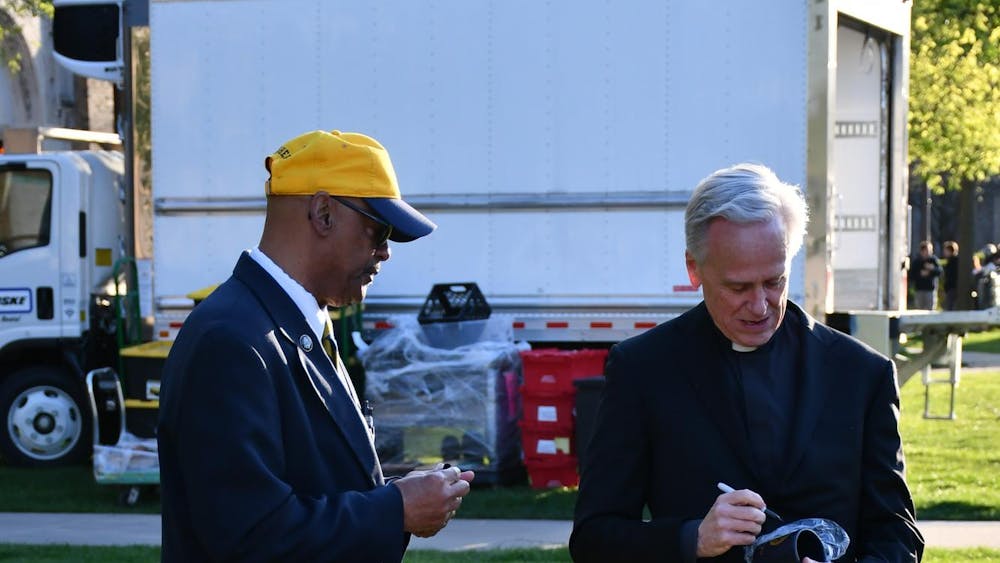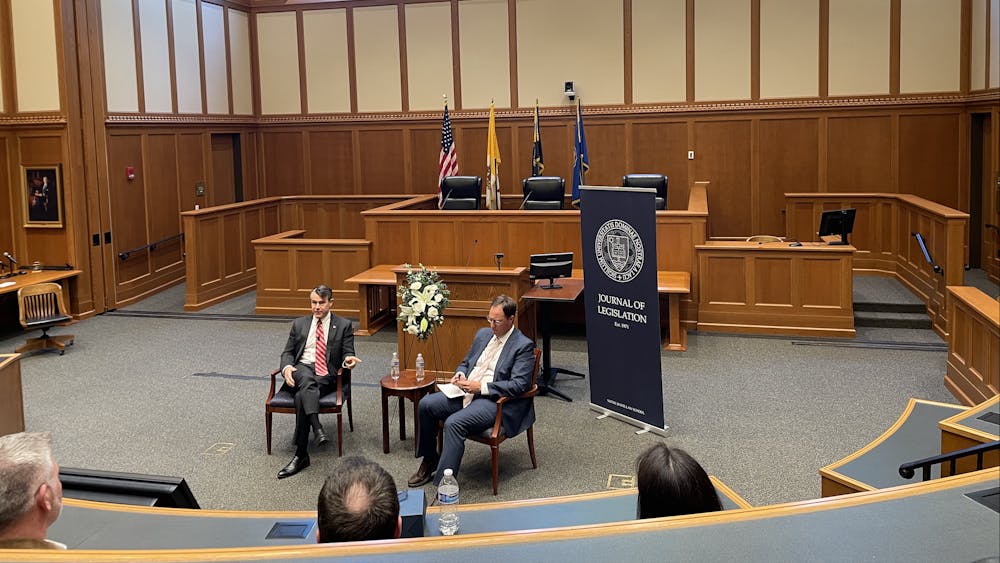Three students brought a British artist's work across the pond to the Library Special Collections Room. The exhibit, which opens today, was organized under the direction of Professor John Sherman, who taught a special class last semester to analyze works from the Department of Rare Books and Special Collections' Eric Gill Collection.
Sherman said Gill was responsible for designing the Gill San font type and sculpting the Stations of the Cross at Westminster Cathedral in addition to other artistic pursuits.

Senior Juliana Hoffelder and sophomores Micahlyn Allen and Kelly Fallon gathered materials from the collection for the exhibit, titled "All Art is Propaganda." Each student also wrote an essay, published for the exhibit catalog.
Sherman, who has been involved with the collection for 15 years, said the class offered a unique research opportunity.
"They are writing their own sake and forming these opinions themselves," Sherman said. "For some students, that's a different experience. You are usually trying to learn what somebody else thinks."

Hoffelder said through the exhibit, she hoped students would gain "a respect for the type of research we did and how it's an alternative, collaborative approach to a topic."
The class included a weeklong trip to London where students grasped Eric's Gill influence on art, design and catholic social teaching.
According to the exhibit's catalog, Gill began his career in London. In 1907, he moved to Ditchling, England, where he helped establish the Guild of Saint Joseph and Saint Dominic, a Catholic community of sculptors, writers and other artists.
Fallon, who examined the collection from an art historian's perspective, said the trip complemented her study at Notre Dame.
"Before the trip, it was difficult to grasp how influential he had been," Fallon said. "But once we were in London and in Ditchling and meeting people who were descendants of the guild, it really made the whole project come alive and made the collection seem extremely relevant."
Gill's work extended into multiple facets of the community. In addition to designing fonts and sculpting Stations of the Cross, he constructed war memorials. The Catholic Worker Movement later used his drawings and images in their publications, Sherman said.
Allen said Gill's religious and secular works were not always distinct.
"A lot of his work was controversial because he tended to put religious implications in his secular work, and he was never afraid to push the envelope," Allen said.
Sherman hoped viewers of the exhibit would appreciate this adherence to a belief system.
"I think one of the examples of the Guild is that, no matter what your profession, you don't have to have a boundary between how you live your life and how you work and how you pray," Sherman said. "You don't need to compartmentalize."
The Guild's integration of their beliefs into their art led the students to choose the exhibit's title, "All Art is Propaganda," from a 1934 essay by Gill.
"Some people feel that art is not about their lives," Sherman said."He felt that art needed to be engaged in the lives of people and making a difference."
Ruth Cribb, one of the scholars the students met with in London and descendant of a Guild member, will present her Eric Gill research and comment on the exhibit March 3 in the Special Collections Reading Room.












